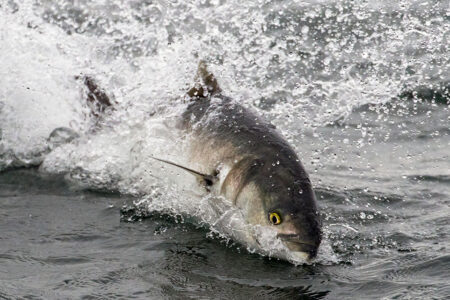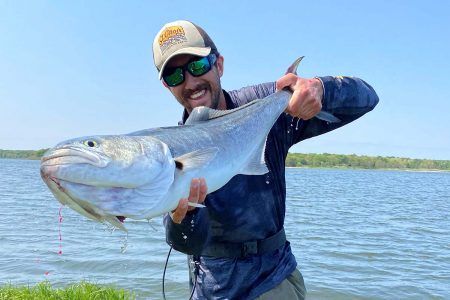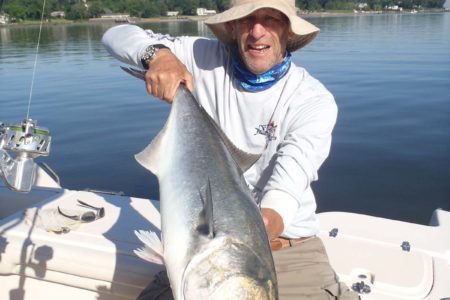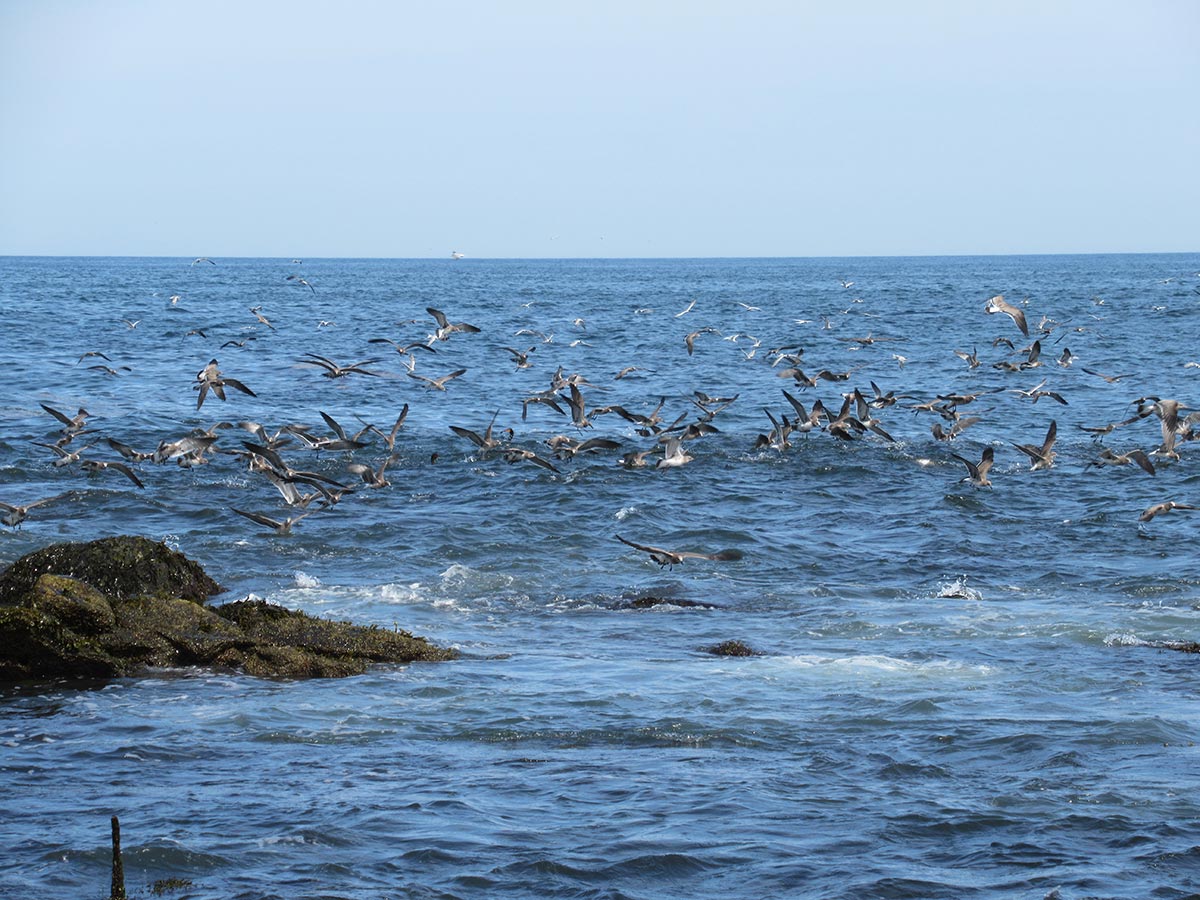
If you wait until the 9th month for the ‘Fall Run’ to begin you might just miss some of the best fishing of the season.
Peanut bunker are the baitfish that can lift slow summer fishing out of the doldrums. Like clockwork, huge schools of this bait will arrive along the Rhode Island oceanfront this month, and they will attract masses of stripers and bluefish in hot pursuit. For fishermen, it will be a taste of fall fishing and the start of exciting things to come.
Past tradition tells us that the peanut bunker invasion should start by the beginning of September. However, with warming weather and warming waters, our fish migrations are happening sooner these days, and peanut bunker are no exception. In the last two years I have run into vast schools of this bait a month ahead of schedule along the Rhode Island oceanfront and in Narragansett Bay. Last year I saw them in late July in Narragansett Bay and found big numbers in early August along the oceanfront. In this early migration of the last two years, I’ve seen astronomical numbers of peanut bunker in places along the south shore oceanfront that would turn half mile stretches of beachfront into a sea of acres and acres of moving bait.
Last year I hit some of these massive schools of bait in mid-August along a rocky shoreline of the Rhode Island oceanfront. It quickly led to a striper blitz that was simply incredible for this time of year. The place was choking with peanut bunker, and everywhere I looked, birds were diving and stripers were feeding in a surface frenzy. Wave after wave would wash schools of this bait onto the rocks and into many of the tidal pools along the shore as they tried to escape the pursuing stripers. As the tide dropped, millions of these peanut bunker became stranded. The rocks soon turned silver and black with countless dead baitfish all over the rocks and dried tidal pools. The fishing that day was no less spectacular with a schoolie on just about every cast of my float and bucktail jig.
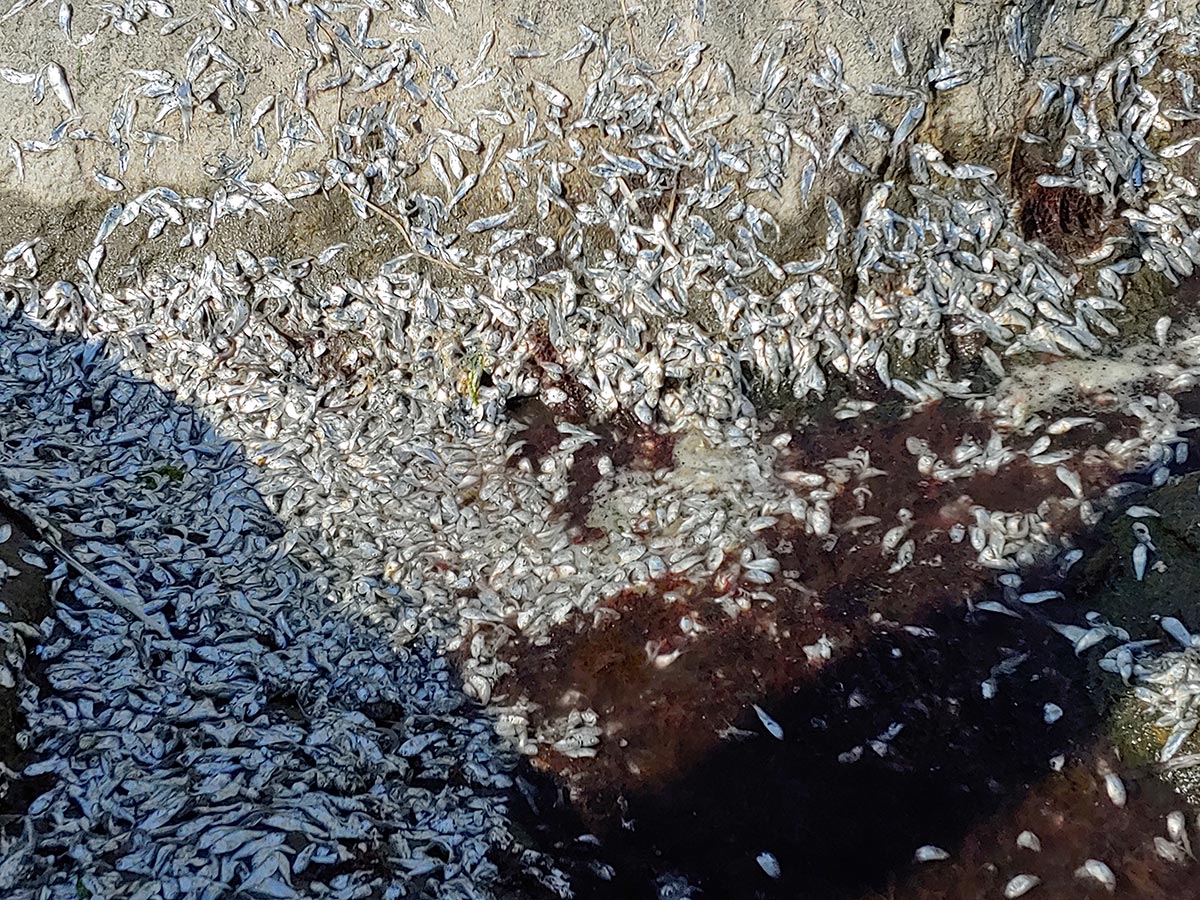
These huge blitzes have been occurring the last two years at an earlier than normal timeframe catching many fishermen by surprise. I’ve seen very few fishermen after these blitzing fish. I would sometimes hit blitz after blitz for days on end with only a couple of fishermen around me; few fishermen knew this was happening. I guess most were waiting for the fall runs to start, and I fully expect this early explosion of peanut bunker along with striper blitzes to occur again this year.
If you head out fishing in late July and early August, plan to load the surf bag with artificials geared to fooling fish feeding on peanut bunker. Keep in mind that the peanuts in the early going tend to be small, sometimes only an inch or two in length. They will of course increase in size as the fall progresses, but early on you need to think small.
Sometimes the predators can be super aggressive when feeding on peanut bunker, and they will hit just about anything, but oftentimes stripers feeding on small peanut bunker in warm water can be fussy. Stock a number of small artificials, but realize that some plugs and lures will produce some days and be ineffective on other days. Here are some ideas that might do the trick.
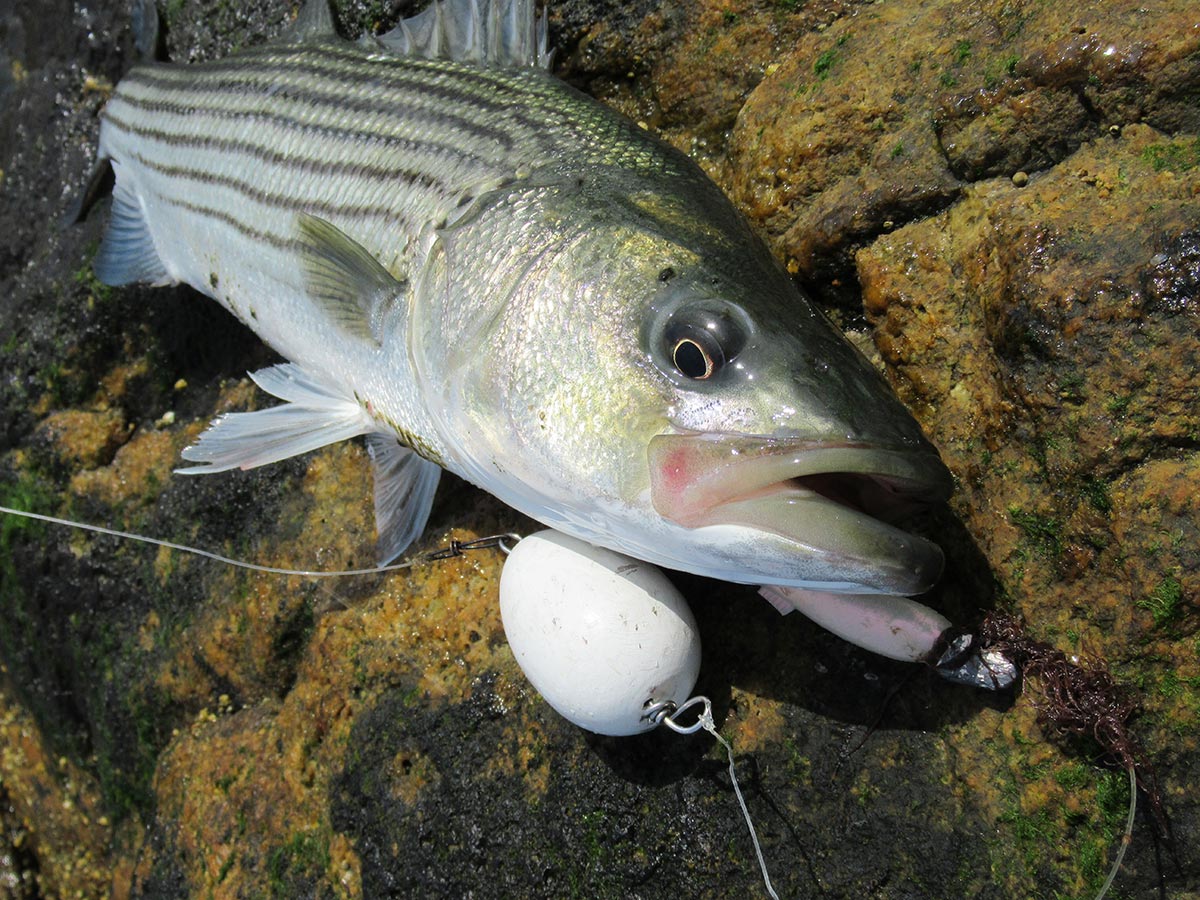
I like to use jigs when stripers are feeding on peanut bunker. These include bucktails as well as plastics on jigheads. For me, the best producer in recent years has been a flathead bucktail jig (same profile as small peanut bunker) matched with a 3inch white plastic curly tail (same swimming movement) threaded onto the hook. I like these in a smaller size, with about ½-ounce being just about right. The problem is that a ½-ounce jig is tough to cast any distance with medium to heavy gear. Tying the jig off a 3-foot leader at the end of an egg float is the way to go, especially in rocky, shallow areas. If the fish are close to shore, consider just the jig without the float.
Another jig alternative that sometimes works well is a plastic fan or paddle tail body mounted on a jighead. I especially like 3- and 4-inch Cocahoe minnows in glow or white colors. These lures can also be fished alone or off a float. One other plastic lure to consider is a small shad body. You can thread these onto a jighead or you can buy it already put together like those offered by Storm and Tsunami. Light colors are your best bet. Note that jigs offer an advantage when catch-and-release fishing for schoolies since their single hooks do little harm to fish you intend to release.
There were times last year when larger bucktail jigs, those lures over an ounce, were also productive when bass were feeding on peanut bunker. This mostly occurred when the water was very rough and turbulent with the wind blasting in my face. I had good luck using a homemade spire point bucktail jig (1 or1 ½ ounce) with a Fat Cow jig strip attached to the hook. That bigger jig also seemed to catch some bigger fish amid swarms of small schoolies.
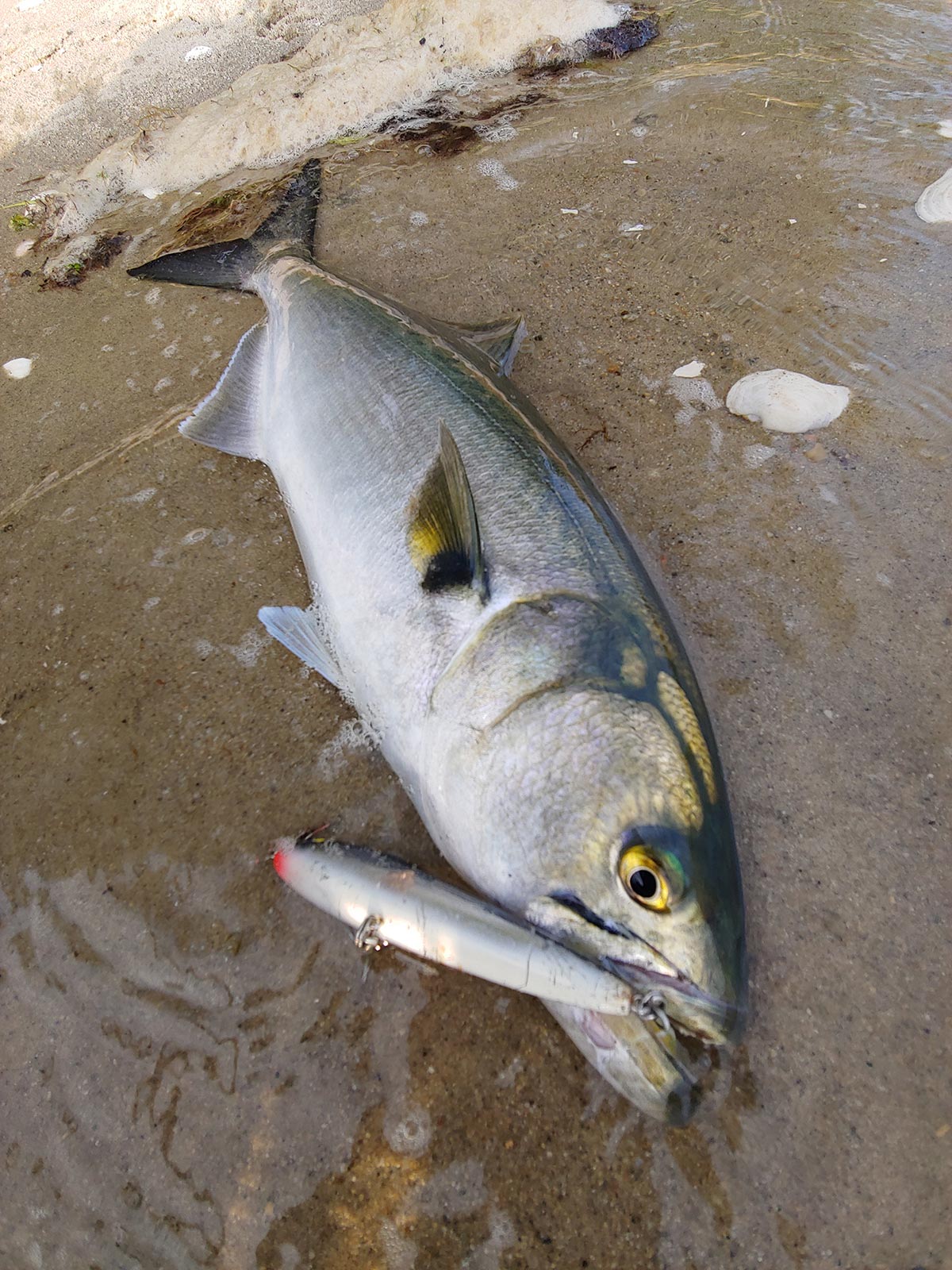
Sometimes the fish may want a lure to chase on the top, especially if those predators are bluefish. About my best topwater lure to use when blues are on peanuts would be a spook-type lure. I especially like the Rebel Jumpin’ Minnow in the bone color. Another similar lure to use when a longer cast is needed is a Yo-Zuri Hydro Pencil. The hydro pencil weighs about ½-ounce more than the Jumpin’ Minnow, is beefier and casts like a bullet. Last year these two topwater plugs worked wonders for me in Narragansett Bay where there seemed to be more bluefish than stripers. You might want to consider crushing the treble hook barbs on these plugs for easier catch and release. You might also want to remove the rear treble. You can leave it off the plug or replace it with a single hook. (Editor’s Note: Another modification is to replace the trebles altogether with single inline hooks, just be sure to upsize by at least two or three sizes to retain the plug’s balance and ensure solid hook-ups.)
In the last two years, Narragansett Bay and the Rhode Island oceanfront fished a lot differently after the peanut bunker arrived. The Bay had enormous numbers of bluefish, especially those blues in the 3- to 5-pound range. In an age of declining numbers of bluefish, I would guess that there were more bluefish in the Bay last summer and fall than anywhere else along the East Coast at the time. The oceanfront, on the other hand, was simply loaded with stripers. It was mostly schoolies in the 20- to 24-inch range with an occasional small keeper (28 to 30 inches) in the mix. I am guessing we will see those same size fish, maybe a little bigger, this year.
My advice to Rhode Island fishermen is to be prepared for a summer start to fall fishing. If it plays out like the last two years, it will happen early with big time fishing coming in August. Be on the lookout for the peanut bunker invasion as those baitfish will be the trigger mechanism that will touch off some of the wildest summer blitzes of stripers and bluefish that you’ll ever see.

